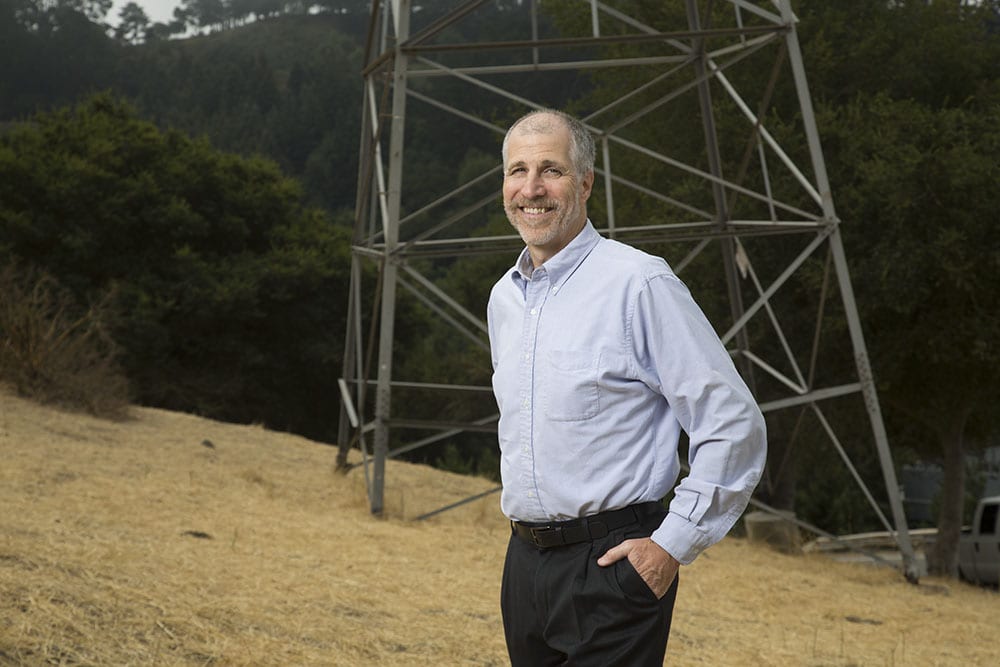Are mass power shutdowns the new normal for California, and what does this mean for the state’s businesses and the economy? What is the path forward for the state’s aging grid, and the thousands of miles of power lines strung across fire-prone wildlands?
Professors Severin Borenstein and Catherine Wolfram of the Energy Institute at Haas (See Q&A below) have been fielding a stream of questions from journalists all week after Pacific Gas & Electric determined it could not guarantee the safety of its lines and shut down power to hundreds of thousands of people, including the entire UC Berkeley campus. SoCal Edison also cut power Thursday.

Borenstein on Tuesday banged out a blog post with pro tips for getting through a power shutoff and then spent the day getting ready himself, packing the freezer with ice to add thermal mass. “This is why we live in a modern economy, so we don’t have to spend most of our lives doing these things,” Borenstein, the E.T. Grether Chair in Business Administration and faculty director for the Energy Institute at Haas, told the Los Angeles Times.
Wolfram, whose research centers on energy in the developing world, pointed out that in places with unreliable power such as sub-Saharan Africa, businesses have no choice but to incorporate the cost of backup power into their budgets. Commercial generators can run upwards of $10,000, she told NPR’s Marketplace.
“That becomes essentially like a tax on the economy,” said Wolfram, Cora Jane Flood Professor of Business Administration who also serves as Associate Dean for Academic Affairs and Chair of the Faculty.

For California’s energy economy, the effects of climate change are throwing things off balance to the point where some things will have to change. Concrete poles may be necessary in windy areas; another possibility is that the state require batteries in new developments that are in high-risk fire areas so power shutoffs to them aren’t so disruptive, Borenstein suggested in another Los Angeles Times story.
Utilities have long sought to balance the cost of preventing wildfires with the need to sell cheap power, said Borenstein, who serves on the board of governors for the California Independent System Operator, which oversees the state grid. “It used to be that balance was viewed as pretty reasonable. With climate change, I think it’s not any more.”
We asked a few more questions of both professors.
Is it possible to gauge the economic impact of this week’s power shutoffs?
Catherine Wolfram: Yes and no. I’ve seen estimates that run all the way from $65M to $2.6B. That’s a pretty wide range, but even the high side is less than 1/1000th of the state’s annual GDP. So, while the outages are troubling, there shouldn’t be any concern that this will set us into a recession. (Update 10/14: Read Wolfram’s blog post estimating economic loss to be about $1B).
I’ve been pointing out, though, that these outages are very unusual because they’re a really long duration—not your typical two-minute to two-hour outage—but they’re not associated with a natural disaster. So, if we try to extrapolate from other multi-day outages, we’re likely conflating the effects of the thing that led to that outage, like Superstorm Sandy, say. With a hurricane, it’s likely that the economic losses reflect both the costs of the natural disaster and the costs of the lost power.
At the same time, there are likely going to be losses that are hard to measure. For instance, I got an email from a colleague who was worried that months of work on an experiment could be lost. Electricity is used for many, many different purposes in modern economies, so it’s really hard to put a precise number on the losses.
People were already angry with PG&E before this shutdown, and now they’re even angrier. Do you think the shutoffs were justified?
CW: It’s really hard to know. The fires last year were devastating, so no one wants to repeat that experience. PG&E has pretty strong incentives right now to be extremely cautious.
Severin Borenstein: Effectively PG&E has a huge financial liability if their equipment starts a fire. On the other hand, the large financial and other costs of shutting off power are not borne by PG&E, but by customers. They do take a reputation hit, but don’t face the same sort of financial downside that would fall on them if their equipment started another fire.
In balance, were they effective?
CW: This involves proving a negative, which is practically impossible. We’ll never really know whether the outages prevented a fire from starting.
As we begin to feel the effects of climate change, what is the path forward for the state’s aging grid?
CW: I’d say that other utilities have been better than PG&E at investing in modern technologies that help prevent fires and give them more visibility into their electricity systems. For example, I’ve heard that San Diego Gas & Electric has technologies that de-energize lines when they sense that they’re falling. Hopefully, PG&E will start investing in things like this.